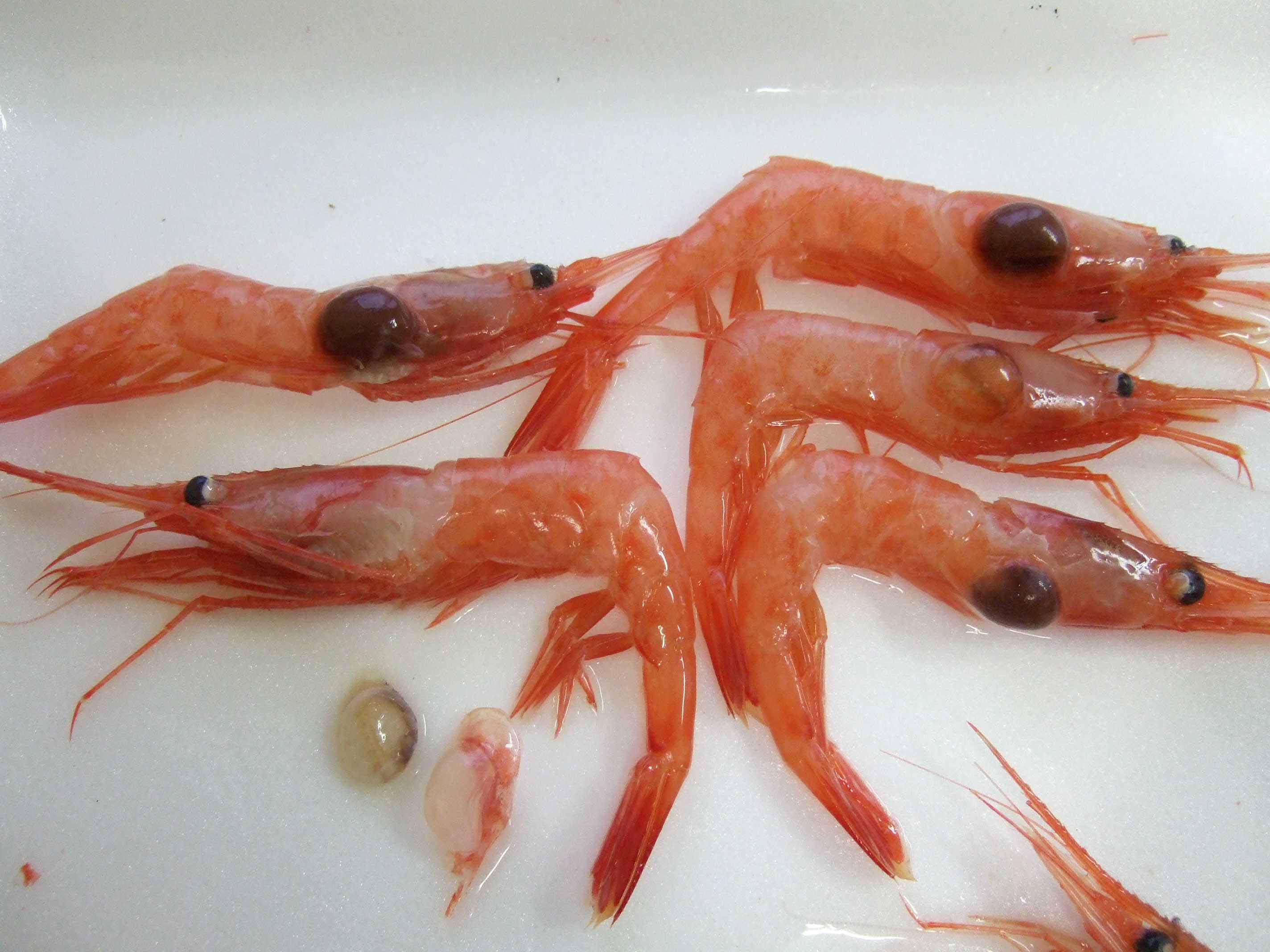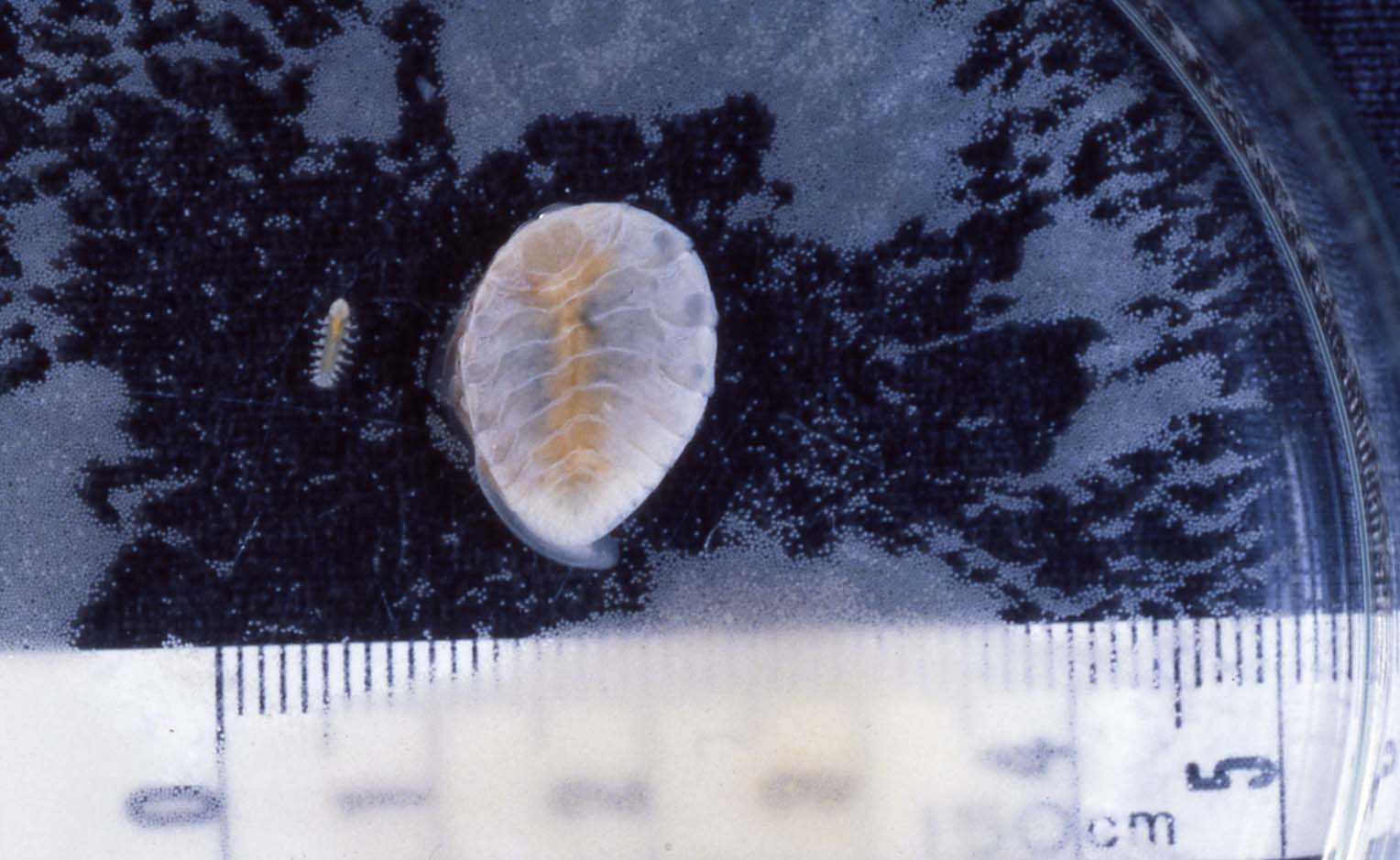
| Parasite | Bopyroides hippolytes |
|---|---|
| Taxonomy | Arthropoda, Crustacea, Malacostraca, Isopoda |
| Hosts | Northern shrimp (Pandalus eous), humpy shrimp (P. goniurus), Aesop shrimp (P. montagui), (Eualus spp.), (Spirontocalis spp.), (Pandalopsis aleutica), etc. |
| Infection site | Branchial chamber |
| Clinical sign | Infected shrimps exhibit a swelling of the carapace caused by the presence of the parasite in the gill chamber (Fig. 1). |
| Parasitology | Bopyroides hippolytes is a parasitic crustacean, infecting the branchial chamber of shrimps such as Pandalus spp. (Boyko, 2004). Dioecious. The body of female (ca. 8 mm in length) is asymmetric and oval, while that of male (ca. 2 mm) is symmetric and elongated (Fig. 2). Male and female habit in the branchial chamber on one side, where the male parasitize the female. Generally, the free-living larvae (epicardium stage) hatched from eggs, become the microniscium larvae, which attach on the surface of free-living copepods. They metamorphose into the adult (cryptoniscium) on the body surface of the shrimp. However, the life cycle of B. hippolytes is unknown in detail (Shiino, 1969). |
| Pathology | Pathogenicity to host shrimp is considered to be negligible. |
| Health hazard | Since this parasite is not infectious to human, it is harmless in food hygiene. This disease does not influence on texture of the shrimp. |
| Diagnosis | This parasite can be visually observed in the gill chamber. |
| References | Boyko, C. B. (2004): The bopyridae (Crustacea: Isopoda) in Taiwan. Zool. Studies, 43,
677-703. Shiino, S. (1969): Suisan musekitsui dobutsu gaku. Baifukan, Tokyo, 345pp. (In Japanese) |

Fig. 1. Swellings of the carapace of shrimps caused by B. hippolytes.

Fig. 2. Male (left) and female (right) of B. hippolytes.